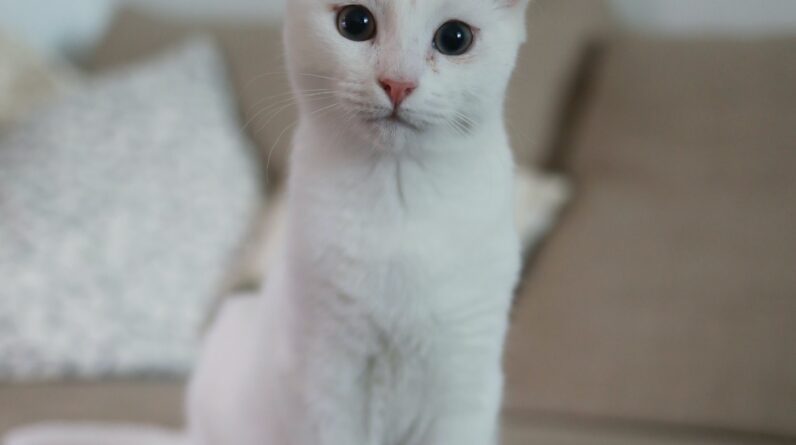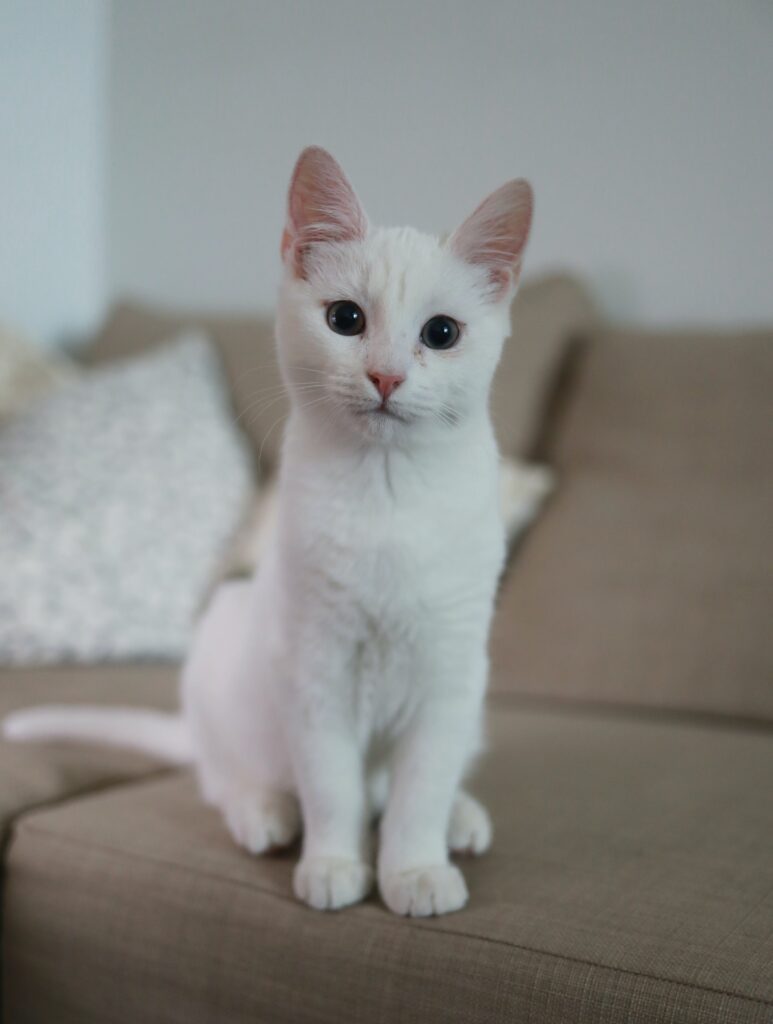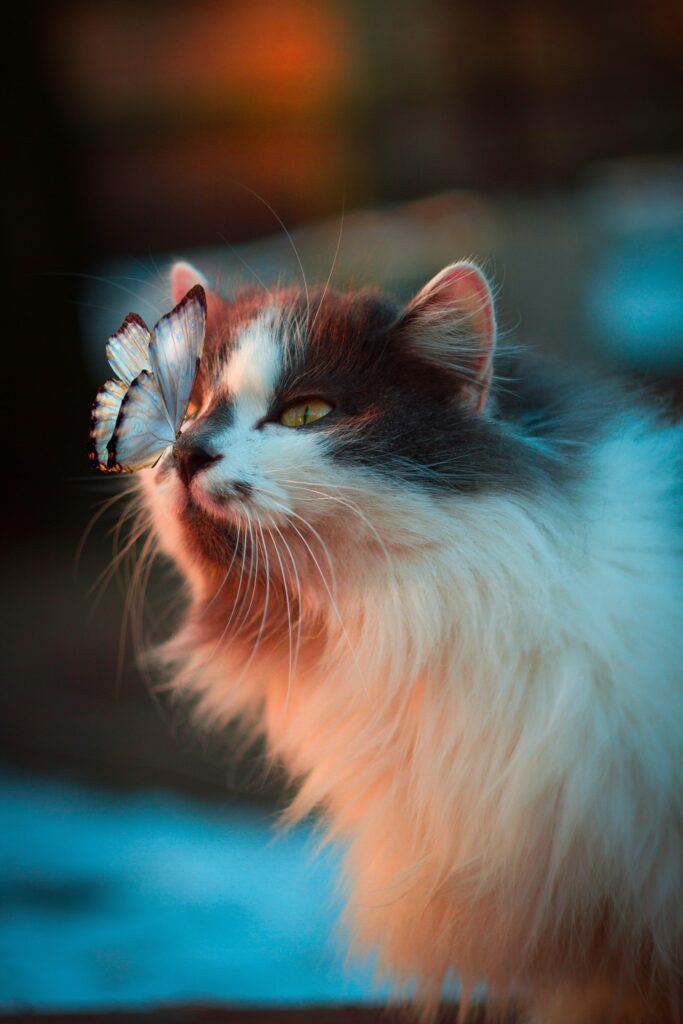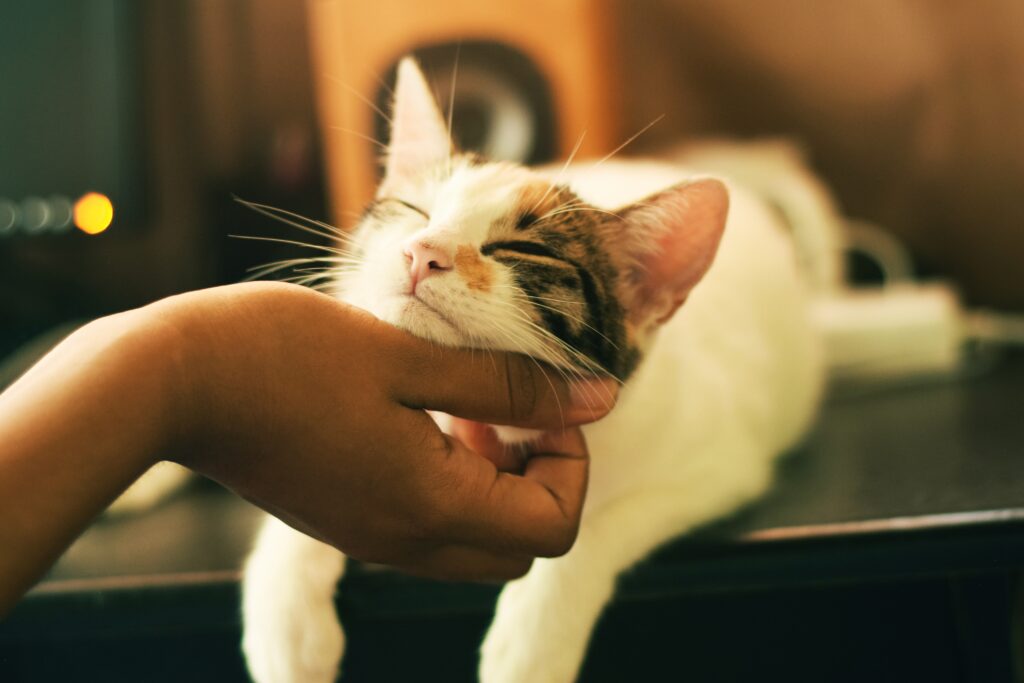
If you’re a proud cat parent, you’re likely familiar with the never-ending saga of cat hair shedding. From finding fur on your clothes to endless vacuuming, dealing with cat hair can sometimes feel like a never-ending battle. But fear not! In this article, we’ll explore some simple yet effective strategies to help you tackle the issue head-on and keep your home fur-free. So, say goodbye to those pesky tumbleweeds of cat hair and get ready to enjoy a cleaner, more hair-free environment with your feline companion.
Table of Contents
Understanding Cat Hair Shedding
Cat hair shedding is a common occurrence for all cat owners. This natural process helps cats get rid of old and damaged hair to make way for new hair growth. Understanding the reasons behind shedding and how to manage it can help keep your home clean and your cat healthy and happy.
Normal Hair Shedding in Cats
All cats, regardless of their breed or hair length, shed their fur. This is a normal process that typically happens year-round. Shedding is influenced by various factors such as age, breed, and overall health of the cat. Generally, shorthaired cats shed less compared to longhaired cats, but every cat will still experience shedding to some extent.
Causes of Excessive Shedding
While shedding is a normal occurrence, excessive shedding may indicate an underlying issue. Several factors can contribute to excessive shedding, including poor nutrition, allergies, underlying health conditions, and a stressful environment. If you notice that your cat is shedding an excessive amount of hair or experiencing bald spots, it is important to consult with your veterinarian to rule out any underlying medical conditions.
Is Cat Hair Shedding Seasonal?
Many cat owners notice an increase in shedding during certain seasons, commonly in the spring and fall. This is often referred to as “blowing their coat.” During these periods, cats shed their winter or summer coat to adjust to the changing temperature. However, it is important to note that not all cats will experience seasonal shedding. The shedding patterns can vary depending on the individual cat and their specific breed.
Signs of Excessive Shedding
It’s crucial to differentiate between normal shedding and excessive shedding. Signs of excessive shedding include clumps of hair coming out easily, noticeable bald patches, constant scratching or licking, and skin irritation or inflammation. If you notice any of these signs, it is important to consult with your veterinarian to determine the cause of the excessive shedding and develop a suitable treatment plan.
Preventing Cat Hair Shedding
While it is impossible to completely eliminate shedding in cats, there are steps you can take to minimize excessive shedding and maintain a healthier coat for your feline friend.
Regular Grooming
Regular grooming plays a crucial role in managing cat hair shedding. Brushing your cat’s fur daily or a few times a week helps remove loose and dead hair, preventing it from ending up all over your home. Different breeds may require different types of brushes, so consult with your veterinarian or a professional groomer to determine the best grooming tools for your cat.
Balanced Diet and Supplements
A proper diet is essential for maintaining healthy skin and coat. Ensure your cat’s diet is well-balanced with high-quality cat food that provides necessary nutrients. Omega-3 fatty acids, found in fish oil supplements, can also help improve the health and condition of your cat’s coat. If you are unsure about what diet or supplements are suitable for your cat, consult with your veterinarian for personalized recommendations.
Maintaining a Stress-free Environment
Stress can contribute to excessive shedding in cats. Create a calm and stress-free environment for your cat by providing hiding spots, comfortable resting areas, and plenty of interactive toys. Regular playtime and positive interactions can help reduce stress levels and minimize shedding caused by anxiety.

Controlling Cat Hair Around the House
Managing cat hair around the house can be challenging, but with the right strategies, you can keep it under control and maintain a clean living space.
Use Lint Rollers and Sticky Tape
Lint rollers and sticky tape are handy tools for removing cat hair from clothing, upholstery, and other surfaces. Keep these tools readily available in multiple areas of your home to quickly and efficiently remove any loose hair.
Invest in a Good Vacuum Cleaner
Investing in a high-quality vacuum cleaner specifically designed for pet hair can make a big difference in managing cat hair around your home. Look for features such as strong suction power, specialized pet hair attachments, and filters that trap and remove allergens.
Opt for Leather Furniture
Leather furniture is a great option for cat owners as cat hair is less likely to stick to it compared to fabric upholstery. Leather can be easily wiped down and cleaned, making it a practical choice if you struggle with constant cat hair on your furniture.
Cover Furniture with Blankets or Slipcovers
If leather furniture is not your preference, consider covering your existing furniture with blankets or slipcovers. This allows for easy removal and washing of covers, which can help prevent cat hair from embedding itself in the fabric.
Tips for Dealing with Cat Hair on Clothing
Cat hair on clothing can be frustrating, but with a few simple tricks, you can minimize the amount of hair that clings to your outfits.
Wearing Hair-resistant Fabrics
Choosing clothing made from hair-resistant fabrics can significantly reduce the amount of cat hair that sticks to your clothes. Fabrics such as nylon, polyester, and spandex tend to repel hair, making them a smart choice for cat owners.
Using Dryer Sheets
Rubbing a dryer sheet over your clothes or placing one in the dryer can help prevent cat hair from clinging to the fabric. The anti-static properties of dryer sheets help repel hair, making it easier to remove from clothing.
Removing Hair with a Dampened Rubber Glove
Rubber gloves are an effective tool for removing cat hair from clothing. Simply dampen the glove and run it over the surface of the clothing. The hair will cling to the glove, allowing for easy removal.

Cat Hair Removal from Bedding and Upholstery
Cat hair often finds its way onto bedding and upholstery. Regular maintenance and cleaning can help keep these areas hair-free.
Washing Bedding Regularly
Washing your bedding regularly, including pillowcases, bed sheets, and blankets, can help remove any trapped cat hair. Opt for hot water and a suitable detergent to ensure a thorough cleaning. Additionally, consider using a lint roller or sticky tape to remove any lingering hair after washing.
Employing a Squeegee or Rubber Brush
A squeegee or rubber brush is an effective tool for removing cat hair from upholstery. Simply run the squeegee or rubber brush over the surface, and the hair will gather into clumps, making it easier to pick up and dispose of.
Using the Power of Static Electricity
To easily remove cat hair from upholstery or bedding, utilize the power of static electricity. Dampen a cloth or sponge with water and run it over the surface. The static electricity will attract the hair, allowing for effortless removal.
Utilizing a Clothes Dryer
Throwing loose bedding, pillows, or stuffed animals into the clothes dryer on a no-heat or air-dry setting can help remove cat hair. The tumbling action of the dryer helps loosen the hair, making it easier to remove with a lint roller or in the washing machine.
Managing Cat Hair on Floors and Carpets
Cat hair can quickly accumulate on floors and carpets, making regular cleaning essential to maintain a hair-free living space.
Sweeping and Mopping Floors
Sweeping and mopping floors regularly can help remove loose cat hair before it has a chance to spread throughout your home. Use a broom or mop designed to attract and trap hair for more effective results.
Using a Carpet Rake or Brush
For carpets or rugs, a carpet rake or brush specifically designed to remove pet hair can be highly useful. These tools penetrate the carpet fibers, loosening the hair and making it easier to vacuum up.
Utilizing a Pet Hair Removal Broom
Pet hair removal brooms are designed to attract and remove cat hair from all types of flooring surfaces. Their unique bristle pattern and electrostatic charge make them effective in picking up even the most stubborn hair.
Considering Hardwood or Laminate Flooring
If you are struggling with excessive cat hair on your floors, consider switching to hardwood or laminate flooring. Cat hair is less likely to stick to these smooth surfaces, making it easier to sweep or vacuum up. Additionally, these flooring options are generally more resistant to scratches caused by cat claws.

Dealing with Cat Hair in the Air
Cat hair can easily become airborne, leading to respiratory issues and allergies for both cats and humans. Taking steps to manage cat hair in the air can promote a healthier living environment.
Using Air Purifiers with HEPA Filters
Air purifiers with high-efficiency particulate air (HEPA) filters are excellent tools for removing cat hair and other allergens from the air. These filters capture even the smallest particles, including cat hair and dander, ensuring cleaner and fresher air for you and your cat.
Regularly Changing Air Filters
To maintain good air quality, regularly change the filters in your HVAC system. This prevents the recirculation of cat hair and allergens throughout your home. Opt for filters designed to capture pet hair and dander for enhanced effectiveness.
Consistent Dusting and Vacuuming
Dusting surfaces and vacuuming regularly can help remove cat hair that has settled on furniture, shelves, and other surfaces. Use damp cloths or electrostatic dusters to attract and collect the hair, ensuring a thorough clean.
Keeping Windows Closed During Shedding Season
During shedding season, it is best to keep the windows closed to prevent outdoor cat hair from entering your home. This can help minimize the amount of hair circulating in your indoor environment and reduce allergy symptoms.
Preventing Cat Hair from Clogging HVAC Systems
Cat hair has a tendency to clog HVAC systems, leading to reduced efficiency and potential breakdowns. Taking preventive measures can help maintain the proper functioning of your HVAC system.
Regular HVAC Maintenance
Regular maintenance of your HVAC system, including cleaning and inspections, is essential to prevent the build-up of cat hair and other debris. Schedule professional maintenance at least twice a year to ensure optimal performance and longevity of your system.
Using Electrostatic Air Filters
Electrostatic air filters are designed to trap and remove cat hair from the air as it passes through the system. These filters use static electricity to attract and capture hair and other particles, preventing them from clogging the HVAC system.
Installing a Dedicated Air Purifier
Consider installing a dedicated air purifier within your HVAC system. These systems work in conjunction with your existing HVAC system to filter and remove cat hair and other allergens, keeping your indoor air clean and fresh.
Covering Vents with Special Filters
To prevent cat hair from entering your HVAC system through the vents, cover them with special filters designed to capture hair and debris. These filters can be easily applied and removed, ensuring your HVAC system remains free from clogs.
Cat Hair Removal from Cars
If you frequently travel with your cat, it’s no surprise that cat hair can quickly accumulate in your car. Employing the following methods can help keep your car hair-free.
Using Pet Hair Removal Tools
Pet hair removal tools, such as rubber brushes or specialized pet hair mitts, are excellent for removing cat hair from car seats and upholstery. The rubber bristles or material attract and gather hair, making removal easy.
Vacuuming with a Strong Suction Attachment
Regularly vacuum your car seats and floor mats using a vacuum cleaner with a strong suction attachment. Pay close attention to the crevices and corners where hair tends to accumulate the most.
Employing Rubber Gloves or Balloons
Rubber gloves or balloons can be effective in removing cat hair from car upholstery. Simply rub the surface with the glove or balloon, and the static electricity will attract and gather the hair for easy removal.
Regularly Cleaning and Grooming Your Cat
Regularly cleaning and grooming your cat not only reduces the amount of loose hair but also helps prevent excessive shedding. Frequent brushing and bathing can significantly reduce the amount of hair your cat sheds, ultimately reducing the amount of hair that ends up in your car.
When to Seek Veterinary Help
While shedding is a natural process in cats, certain signs may indicate a need for veterinary assistance. If you notice any of the following signs, it is important to consult with your veterinarian:
Unusual Patterns of Hair Loss
If your cat is experiencing hair loss in patches or unusual patterns, it may be a sign of an underlying health issue. Your veterinarian can help determine the cause of the hair loss and develop a suitable treatment plan.
Excessive Scratching or Licking
Excessive scratching or licking that leads to hair loss or skin irritation may indicate allergies or other skin conditions. Your veterinarian can diagnose and provide guidance on how to manage these conditions.
Presence of Fleas or Ticks
Fleas and ticks can cause excessive itching and hair loss in cats. If you notice fleas, ticks, or any signs of their presence, seek veterinary help for proper treatment and prevention.
Skin Irritation or Inflammation
If your cat’s skin appears red, inflamed, or irritated, it is important to have them examined by a veterinarian. Skin issues can contribute to excessive shedding and discomfort for your cat, and proper treatment is necessary to alleviate these symptoms.
In conclusion, shedding is a natural process for cats, but excessive shedding may indicate an underlying issue. By understanding the causes of shedding and implementing preventive measures such as regular grooming, a balanced diet, and a stress-free environment, you can help manage and minimize cat hair shedding. Additionally, employing effective cleaning methods and utilizing tools specifically designed for cat hair removal can help keep your home, clothing, car, and HVAC systems free from excessive cat hair. If you notice any unusual signs of hair loss or skin issues, don’t hesitate to seek veterinary help for further evaluation and treatment. With proper care and attention, you can ensure a clean and comfortable environment for both you and your feline companion.
